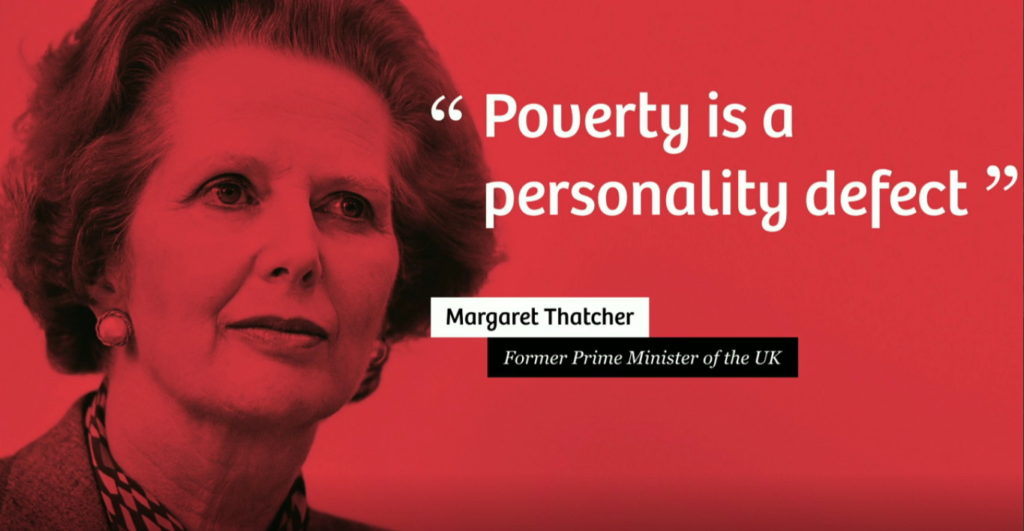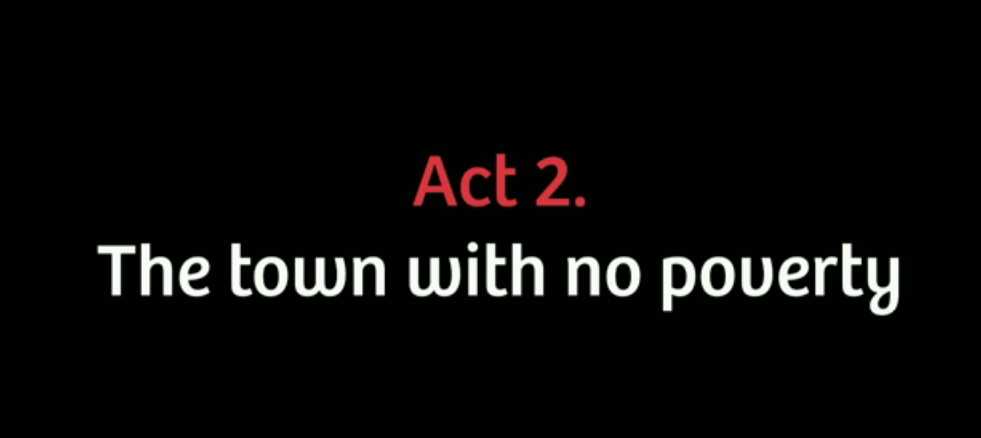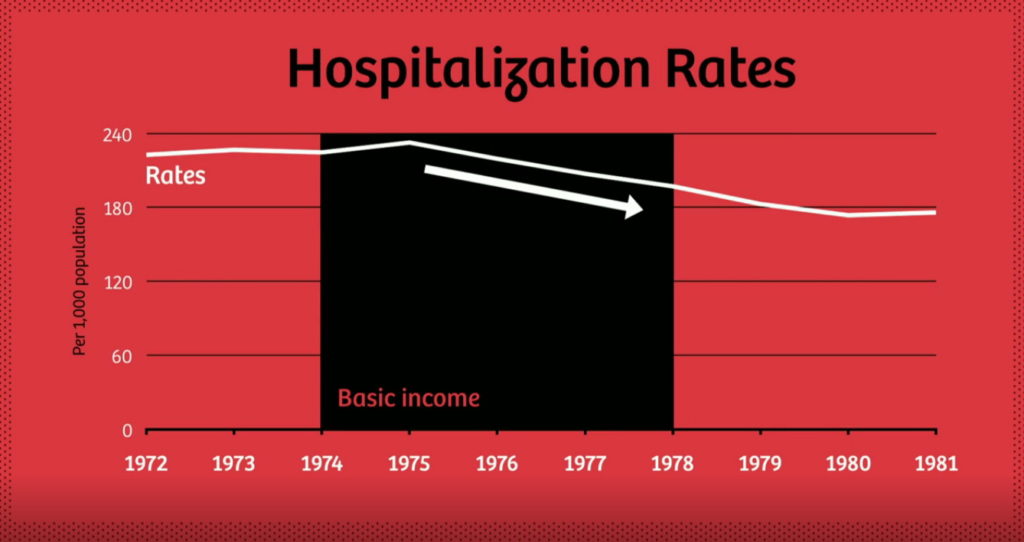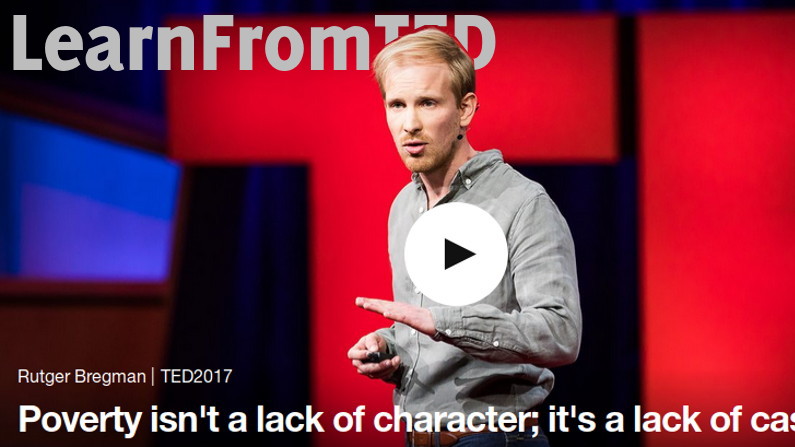#LearnFromTED is back and let’s go strait to the talk, this time it about poverty and the presenter is Rutger Bregman (it’s worth noticing that Chris Anderson pick this as one of the top 10 talks of 2017).
Leave aside the topic, what can we learn from this video, to improve our own public speaking skills?
Let’s start from the slides that have some positives (and few things to improve).
After around 30 seconds this visual aids pops up:

Light text on dark background is usually less readable and in this case the Iron Ladt title is also written in a small font, albeit the TED screen is big. That’s the only critique, on the bright side I love the layout and the colour used, black, white and red, that we’ll find consistently later on (uniformity!).
There’s also a chance to instigate a laugh, although with a little after taste. Humour will come back more in the presentation, especially after half of the 12th minute. Rutger wants to disprove a common bias, probably shared by some in the room, surely found in the wider audience that watches him online. This being that there is something wrong with poor people. To do this he starts from Margaret Thatcher, and then, without accusing the audience directly, he explains that she’s not the only one with that idea maybe even someone in the public. Actually he was one of them! This way he brings any possible blame on himself, creates empathy with others sharing that idea. I am like you, I was like you, there’s nothing wrong with it, but we can change (actually we should).
“It was only a few years ago that I discovered that everything I thought I knew about poverty was wrong.”
This is the key message of the talk: convince the audience to change their point of view on this topic. He starts with his own transformation that approach is way more effective than “Your have a wrong idea”. From here he continues with a personal experience (storytelling) but with facts and data. If you are challenging a biased audience you have to come up with unquestionable facts, better if they are certified by someone with an authority recognised by the listeners.
Just a little after the thrid minute: “You all know this feeling”, a great use of words to keep the public engaged. Followed by a series of examples and anologies, honestly not all of them sound convincingly to me.
After laying down the problem and proposing a solution, from the eight minute he starts to give date to support his idea. I liked the idea of underling this change of subtopic as if it was a change of act in a gig.

Later one I would like to show you the clever use of a black box (and the arrow) to highlight and extract the main message from the graph.

Rutger’s idea is extremely fascinating, nonetheless it has an undelying objection, or at least a doubt, how can we finance an ambitious project like that one? When this is the case it’s always better to bring it out and face it clearly. That is what Bregman does at the 11th minute, by calling the attention to it (“let’s talk about the elephant in the room”) and addressing it directly (“How could we ever afford a basic income guarantee?“).
When you watch from there you see that on top of the rebute of the objection there’s an urging crescendo, as it should be. At the beginning of a talk the audience is cold on our message, we need to build up their enthusiasm gradually, mixing logic and emotions, to move them towards our idea. Only later we can incite and spur them to our goal (what in business is often called call to action).
At 13:40 there is a passage that I love because it uncovers another possible objection (“I know that many of you may feel pessimistic about a future of rising inequality, xenophobia and climate change“). The answer is positive and proactive (“But it’s not enough to know what we’re against. We also need to be for something.“) with an humoristic and inspired parallel with Martin Luther King Jr., lifting from a great classic of public speaking.
As did the famous minister and activist, Rutger uses anaphora, the repetition of a sequence of words at the beginnings of neighboring clauses (“I believe in a future“).
Every great speech, presentation or TED talk should end with a strong message, better, with THE strong message, what we really want the audience to take home. This is the case too, the last sentence is exactly the idea Rutger wants the audience to embrace:
poverty is not a lack of character, poverty is a lack of cash.
For our #LearnFromTED this is a great talk where we can find inspiration and cues for our own public speaking!


Recent Comments